Category: Idaho Army National Guard
Guardsmen help with understaffing, serve locally
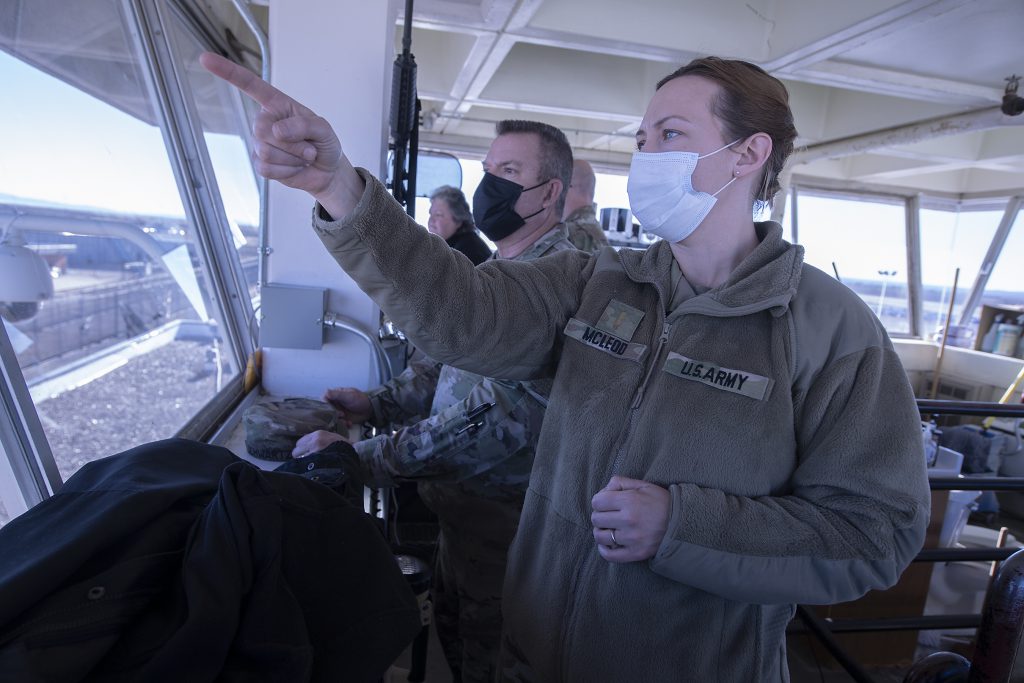
Maj. Robert Taylor/Idaho Military Division Public Affairs
Spc. Kyle Shuman grew up an Army brat and wanted to enlist into the Army himself. Five years ago, he enlisted into the Idaho Army National Guard as a 68W combat medic.
“I wanted to follow in my dad’s footsteps,” he said. “He used to say good things about the military. I thought that being in the National Guard would be a good way to serve in my community and still be in the military and have a civilian career.”
Shuman is one of approximately 75 Idaho National Guardsmen currently assisting the Idaho Department of Correction overcome staffing shortages due to the COVID-19 pandemic. Gov. Brad Little activated the Idaho National Guard for the fourth time Jan. 31, which also included support at multiple Primary Health Medical Group locations until Feb. 25.
Citizen-Soldiers and Airmen are performing non-security duties while the department is severely understaffed. He previously volunteered with the task force last year and deployed to Washington, D.C. in June 2020 to assist local civil authorities as part of an effort that included more than 5,000 National Guardsmen from 11 states and Washington D.C.
“I didn’t know what the mission would be,” he said. “I just volunteered to get new experiences and to get to do things I don’t get to do everyday and to meet people from other units.”
At the prison, Shuman said he assists with monitoring cameras in a control center and opens and closes doors as requested by correctional officers. Shuman said Guardsmen performing similar tasks throughout IDOC facilities helps free up correctional officers to perform security duties. The additional personnel allow residents to move around the facility as normal. Prior to the Idaho National Guard assistance, residents spent an increased amount of time in their cells throughout the day due to a lack of correctional officers.
“It makes me feel good to go out there and help the correctional officers with whatever they need help with,” said Sgt. 1st Class Vincent Mele, the non-commissioned officer in charge of the Idaho Guardsmen working at the state’s minimal security facility.
Mele is working at the facility’s front desk, where he helps sign visitors and staff in and out of the prison and answers the prison’s telephone.
“This mission provides a really good perspective on the world that maybe you didn’t have before hand,” he said. “We all get an idea of what the prison system might be like, and it’s definitely a little different in Idaho than I pictured.”
Guardsmen anticipate assisting IDOC until mid-March. Shuman, Mele and other Guardsmen will then return to their civilian jobs in their respective communities.
“We thank you for everything you’re doing for our staff and residents,” said Warden Timothy Richardson. “Before the Idaho National Guard arrived, at one point we were down to 48% staffing. We realize this is a unique and uncertain environment, but you’ve provided a solid cadre of troops and we couldn’t ask for a better group at such a critical time.”
Idaho deploys a small unit to the AFRICOM Area of Responsibility
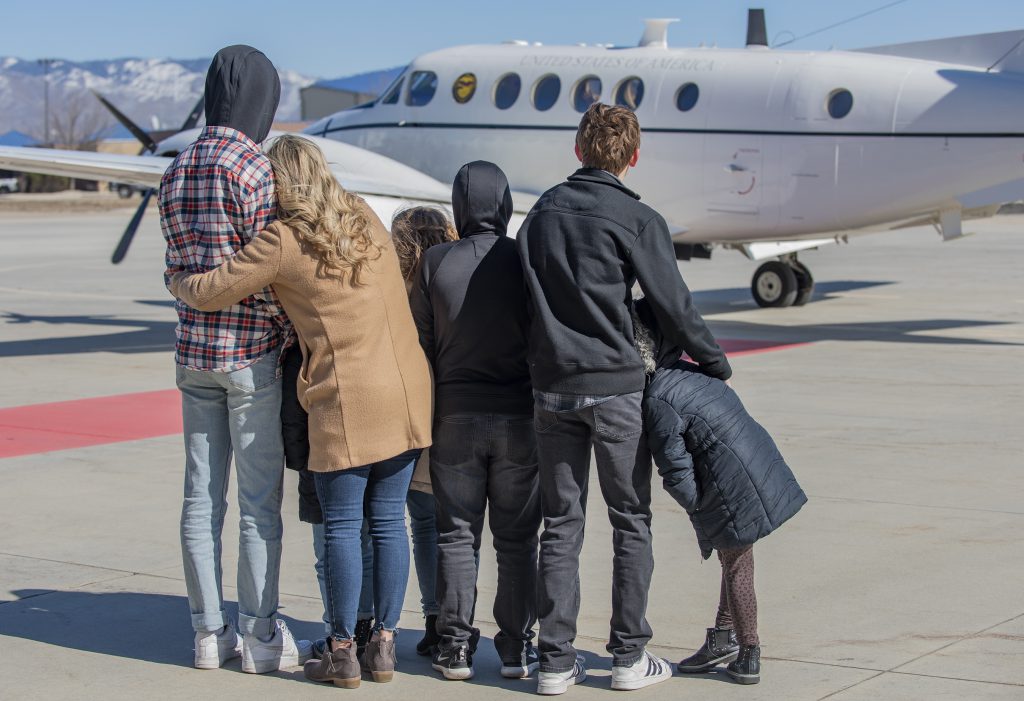
Master Sgt. Becky Vanshur/Idaho Military Division Public Affairs
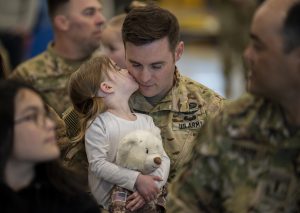 The Idaho Army National Guard Aviation Group deployed a small unit to the AFRICOM Area of Responsibility in support of Operation Enduring Freedom on Feb. 23, 2022. The unit will deploy for less than a year.
The Idaho Army National Guard Aviation Group deployed a small unit to the AFRICOM Area of Responsibility in support of Operation Enduring Freedom on Feb. 23, 2022. The unit will deploy for less than a year.
“The Idaho National Guard always answers the call when we are needed,” said Chief Warrant Officer 4 Spencer Widman, the unit’s commander. “The Africa mission is a noble example of this. I’m proud of the exemplary work the unit has accomplished when called upon in the past and I know their professionalism during this mission will fall in line with the Idaho National Guard’s high standards.”
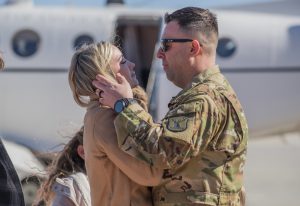 The small unit is based at Gowen Field and flies the C-12 Huron aircraft. This is a routine mission and the unit has supported several of these rotations in the past.
The small unit is based at Gowen Field and flies the C-12 Huron aircraft. This is a routine mission and the unit has supported several of these rotations in the past.
In 2010, the unit deployed to Afghanistan in support of Task Force Odin. They returned to Afghanistan in support of Task Force Caesar in 2013. In 2015, the unit deployed to Bogota, Columbia and to Kuwait in 2016 in support of Spartan Shield.
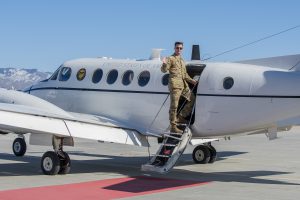 The C-12 Huron can readily accommodate cargo, passengers or both. It is also equipped to accept litter patients during medical evacuations missions. The first C-12 models entered service with the U.S. Army in 1974 and were used as a liaison and general personnel transport.
The C-12 Huron can readily accommodate cargo, passengers or both. It is also equipped to accept litter patients during medical evacuations missions. The first C-12 models entered service with the U.S. Army in 1974 and were used as a liaison and general personnel transport.
Daughter commissions into the Idaho Army National Guard as her father retires
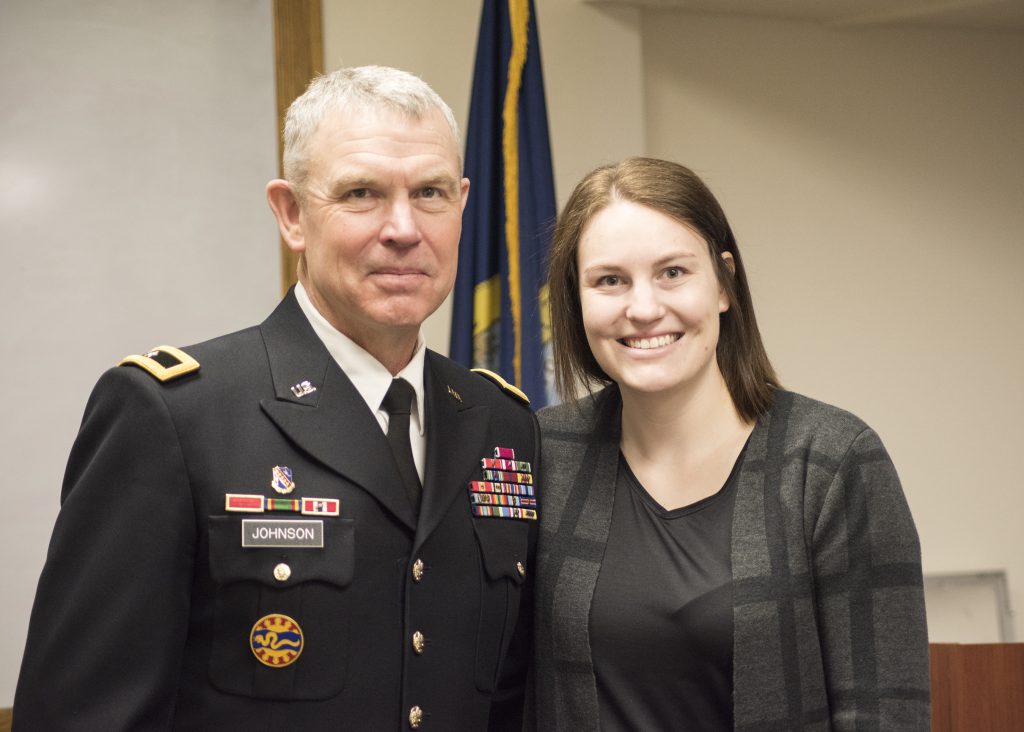
Maj. Robert Taylor/Idaho Military Division Public Affairs
2nd Lt. Marah Sharpe’s father has served in the Idaho Army National Guard for longer than she’s been alive. But despite commissioning into the organization Jan. 28, she will only have the opportunity to attend the same drill weekend with him once.
Her father, Brig. Gen. Russell Johnson, is set to retire in March after more than 41 years of service to the state and nation. Johnson, who currently serves as the Idaho National Guard’s director of the joint staff, first enlisted into the Idaho Army National Guard in November 1985. He served in the Marines from January 1981 to November 1985.
Sharpe direct commissioned as a 66H medical surgical nurse and will serve in the 116th Cavalry Brigade Combat Team, which Johnson commanded from February 2014 to March 2016.
“I don’t remember a part of my life that the Idaho Army National Guard wasn’t in,” Sharpe said. “My dad’s been in since I was born. The Guard has always been a part of my family and a part of my life growing up and I’m excited to be part of that organization myself.”
Sharpe said she previously considered joining the Idaho Army National Guard but the timing hadn’t been right. Now that she has completed her education and settled into her career as a nurse at Saint Alphonsus Regional Medical Center, she felt the timing was right.
Her ability to maintain her civilian career at Saint Alphonsus was important to her.
“I can stay in my civilian job that I really enjoy and be in the Guard at the same time,” she said. “It just seemed right.”
Sharpe said she became a nurse because she likes the flexibility the career offers, the science behind her job and the ability to help people. She is looking forward to practicing medicine in a uniform in addition to scrubs as she learns the demands of being a Soldier.
“I’m most excited to expand my knowledge as a nurse and as a person,” she said. “There’s a lot of learning opportunity for leadership as well as nursing. I’m excited to grow in both areas. I want to be a better nurse and be a better person.”
As a medical professional, Sharpe was able to earn a direct commission into the Idaho Army National Guard without having to complete basic training or a commissioning school. The Idaho Army National Guard accepts six to 10 such appointees each year, which include medical professionals, attorneys and chaplains.
“It’s always a proud moment when someone’s child goes in to the military,” Johnson said. “It shows a commitment to our state and nation with a level of enthusiasm and ambition that they share.”
“The Army and the National Guard are constantly changing,” said Johnson. “One thing that hasn’t changed is the importance of service to our country and state. Today’s Guard is in need of upcoming leaders and folks willing to step up and volunteer their time and efforts. It’s neat to see that level of commitment.”
Johnson administrated Sharpe’s commissioning oath Friday on Gowen Field.
“I’m very proud of her,” Johnson said.
Idaho Army National Guard completes UH-60M transition
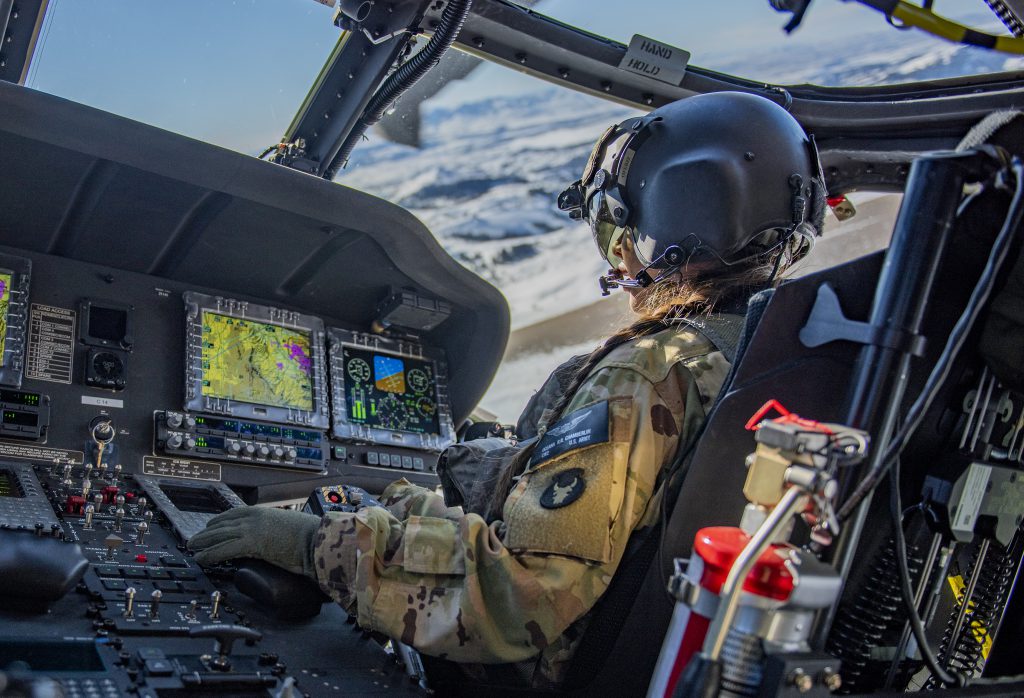
Maj. Robert Taylor/Idaho Military Division Public Affairs
With the arrival of its final two new UH-60M Black Hawks Sunday, the Idaho Army National Guard’s 1-183rd Assault Helicopter Battalion has completely modernize its previous fleet of A/L models to the Army’s most technologically advance multi-role helicopter.
“It’s a reflection of the quality and relevancy of the Idaho Army National Guard,” said Brig. Gen. Farin Schwartz, commander of the Idaho Army National Guard. “Combined with the 116th Cavalry Brigade Combat Team’s modernized armor equipment, the Idaho Army National Guard is one of the most modernized states in the Army National Guard. Modernized equipment enhances our capability to be interoperable with our active duty peers.”
The unit began transitioning to the new model in 2019 and is the fourth airframe unit pilots have flown since 2012. The UH-60M is an upgraded version of the legacy UH-60, designed to execute missions under all weather conditions. Its improvements allow commanders to move Soldiers and equipment faster on the battlespace and to mass effects across the full spectrum of conflict.
“It’s an exciting and unprecedented opportunity to have access to the newest air frame in the U.S. Army’s fleet,” said Lt. Col. Nicole Washington, 1-183rd AHB commander. “It’s exciting being on the leading and cutting edge of aviation. The M model has really set us up as a state and a National Guard entity to continue to lead the way and be on par with active duty counterparts.”
Improvements include a new airframe and propulsion system, more powerful engines and advanced digital avionics inside the cockpit. The glass cockpit is larger to give pilots more situational awareness of what is happening outside the aircraft and four multifunction display screens giving pilots access to multiple systems in real time.
Pilots can track their location on a moving map as well as friendly and enemy positions within the battlespace while communicating securely with other aircraft and ground personnel. Pilots can also map out an air route while in the cockpit to account for a change in mission mid-flight, Washington said.
Chief Warrant Officer 4 John Jacobs, a maintenance test pilot and maintenance test pilot evaluator, said the majority of the helicopter’s upgrades reduce pilot workload and fatigue.
The aircraft physically vibrates less, which Jacobs said makes pilots less tired after flying all day, and features an automated flight director system that functions similarly to a vehicle’s cruise control system. Jacobs said the equipment aids in low visual environments, such as dust and snow conditions, which improves the safety and efficiency of inserting ground forces on the battlefield.
“It’s easier to fly long days,” Jacobs said. “It’s amazing just feeling better when you get out of the cockpit. It’s the difference between driving 500 miles in a 1976 pickup truck versus a 2022 pickup truck.”
Jacobs said the helicopters’ stiffer blades handle sling loads better. The improved blades came in handy when the 1-183rd AHB participated in Idaho’s wildland firefighting efforts last summer. Crews dumped more than 200,000 gallons of water on multiple fires in northern Idaho using the new aircraft.
Pilots began attending a six-week transition course in 2019 to prepare for the new aircraft. The unit received its first UH-60M on Gowen Field in June 2020 and flew the remaining 19 airframes back from New Jersey to Boise over the past 18 months.
The 1-183rd AHB flew the AH-64A Apache for almost 20 years before transitioning to the AH-64D Longbow model in 2012 and then to the UH-60A/L Black Hawk through 2016-2018.
Washington said the multiple transitions caused pilots to go from gauges and dials in the legacy Apache to the technologically advanced Longbows, back to gauges and dials in the UH-60A/Ls before transitioning back to flying digitally. In addition, the transition to Black Hawks required the pilots to integrate crew chiefs into operations, something that wasn’t required in the Apache.
“Now we’ll work to become experts in this airframe, increase our competency and our ability to focus on air assault tasks and combat operations,” Washington said.
Polish Land Forces attend Idaho National Guard tank training
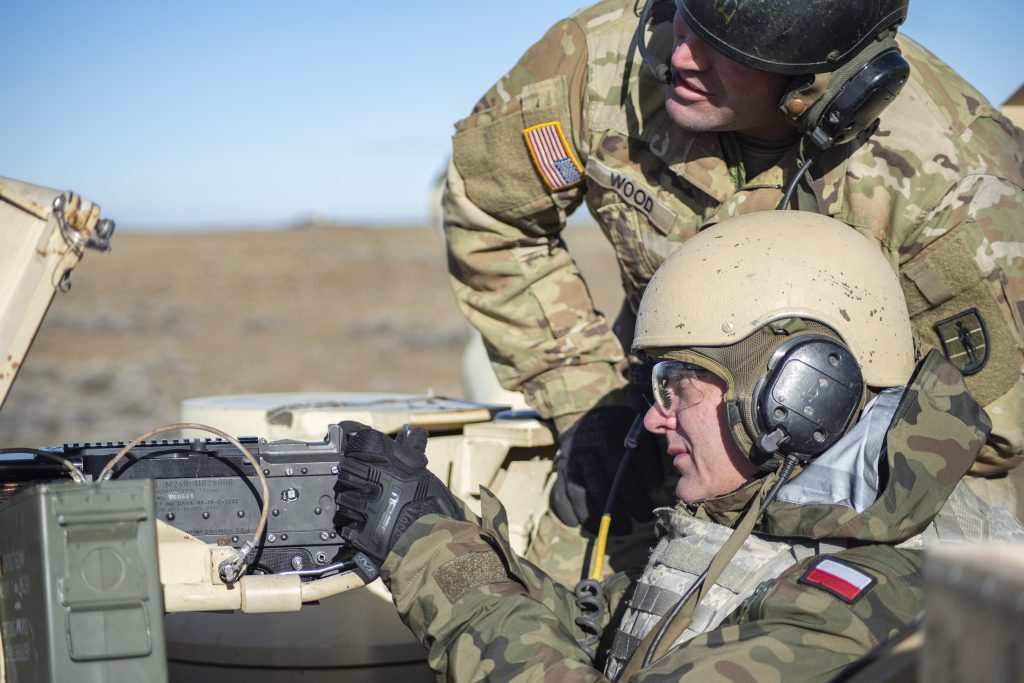
Crystal Farris/Idaho Military Division Public Affairs
Polish soldiers attended Idaho National Guard M1 Abrams tank training in October and November to share best practices on M1 Abrams training.
The Polish military—a U.S. ally, NATO member and official state partner of the Illinois National Guard—recently requested to purchase a fleet of M1A2 SEPv3 tanks and is working through the State Department and the Department of Defense to identify opportunities to partner in armor crew member training.
The Idaho Army National Guard’s 204th Regional Training Institute at Gowen Field trains U.S. military members in armor operation and tactics. During the visit, schoolhouse instructors and armor experts shared training and insights with the Polish.
“The 1st of the 204th Armored Training Battalion is the only National Guard battalion that teaches a full catalog of armored training courses,” said Maj. Noah Siple, commander. “We are credentialed to be the premiere armored training battalion of the National Guard. Couple that with our Orchard Combat Training Center and our ranges for armor-specific training, there is really no better place to go to.”
Polish officers and warrant officers serving in various positions including chief of planning and programming; logistician and fires experts; and company level officers, attended the battalion’s 19K transition course.
The battalion has provided armored training since the 1980s and offers various 19D and 19K courses, including a tank commander’s course and advanced leadership course. A portion of the curriculum requires students to train in the 143,000-acre OCTC, one of the country’s largest and most versatile maneuver training sites, located approximately 25 miles south of Boise.
Soldiers attending the course from the Idaho, Kansas, Oregon and Texas National Guards had the unique opportunity to interface with the Polish soldiers before graduating on Nov.22.
The 27-day course is designed for enlisted members in the ranks of sergeant and staff sergeant. The platoon-level coursework provides training in the technical and tactical skills necessary to employ the M1A1 or M1A2 SEP tank against enemy positions during unified land operations.
While Poland currently operates the T-72 and P-91 tanks, the M1A1 and M1A2 offers an array of operational differences and capabilities, said Sgt. 1st Class Lucas Kaserman, the 19K transition course manager.
“We integrated the Polish soldiers as much as possible into the training course to give them many of the same opportunities we give our U.S. students,” said Kaserman. “They already have a familiarity with tanks, which was helpful, however, the M1 is a different kind of tank with a lot of new things to learn.”
Throughout the course, Polish members took turns rotating through the driver, loader, gunner and commander crew stations; participated in tank simulators where they operated as both tank commander and gunner while engaging simulated targets; and conducted live-fire familiarization in the OCTC, where they fired different weapon systems of the tank, including an M240 and .50 caliber machine gun.
Additionally, they spent time with course experts and senior leaders of the Idaho Army National Guard, including its 116th Cavalry Brigade Combat Team, an M1 tank unit.
“They came here to experience first-hand training with the M1A2V2 Abrams tank and to understand how we train and construct courses for Soldiers becoming tankers in the U.S. military,” said Siple. “They also got to engage and build relationships with all elements of the Idaho Army National Guard.”
In November, senior leaders from the Polish Land Forces and Illinois National Guard visited Idaho to observe course training and what the 1-204th RTI has to offer. The visitors had the opportunity to tour some of the Idaho Army National Guard’s facilities, equipment and its premiere OCTC, in addition to engaging with Idaho’s leadership and armor experts.
The Illinois National Guard and Republic of Poland enjoy an enduring State Partnership Program focused on professional military education, crisis management and response as well as operational combat and deployment training. The partnership began in 1993 just after Poland emerged from behind the USSR’s Iron Curtain. Poland was accepted as a full NATO ally in 1999. Polish and Illinois National Guard soldiers co-deployed first to Iraq and then to Afghanistan from 2003 to 2020.
The Illinois National Guard does not operate or maintain the M1 tank and helped facilitate the co-training with Idaho.
The Nez Perce Tribe and Idaho National Guard work together during COVID-19
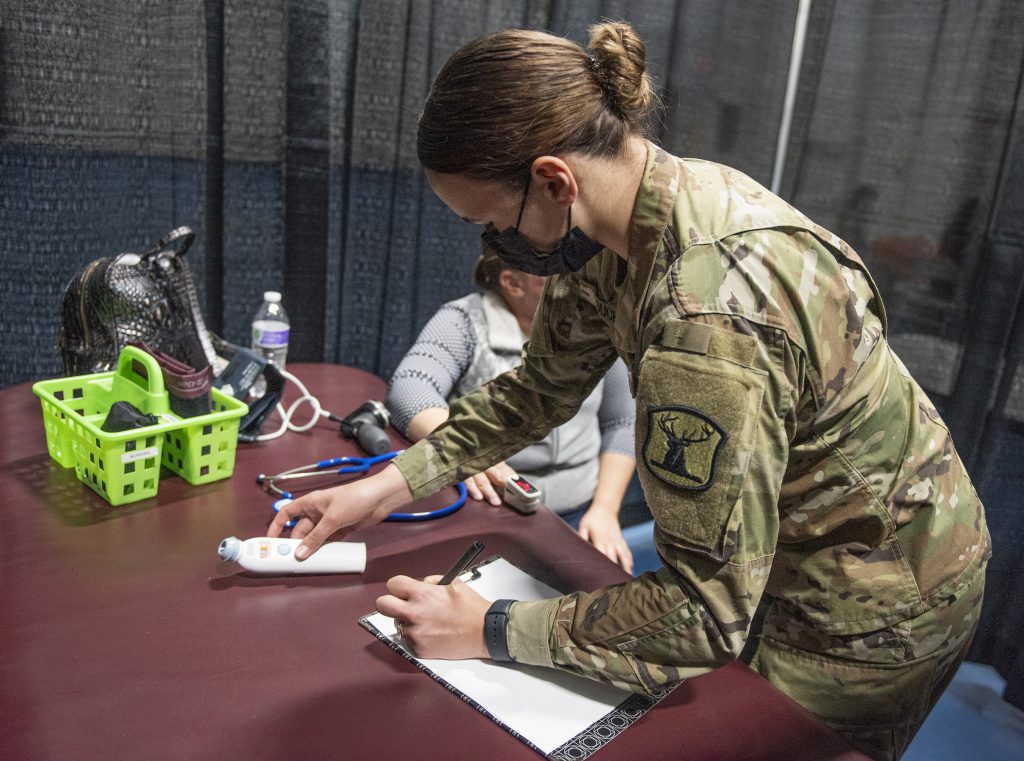
Master Sgt. Becky Vanshur/Idaho Military Division Public Affairs
Nez Perce Reservation, IDAHO – Idaho National Guard and Nez Perce dental personnel teamed up Nov. 10 – 13 as part of a larger effort to recover from the summer’s surge of COVID-19 cases plaguing northern Idaho.
The Nez Perce Tribe and the Idaho National Guard are working together through a program known as Innovative Readiness Training to help the Nez Perce community’s healthcare system recover after becoming backlogged during a community-wide shut down earlier this year. The dental visit was part of a larger medical effort taking place between the tribe and the Idaho National Guard.
“Idaho National Guard members are driven by a sense of purpose,” said Maj. Gen. Michael Garshak, the adjutant general of Idaho. “IRT collaboration like this not only enables us to sharpen our military skills, but it also provides great opportunities to make positive impacts to the communities of Idaho and a difference in the lives of our fellow citizens.”
The Nez Perce tribe submitted a collaborative IRT application earlier this summer to request assistance in addressing their overwhelmed medical staff resulting from the second wave of COVID-19 cases. The Idaho National Guard responded by sending medical and dental citizen-Soldiers and Airmen performing three missions—a two-part diabetic IRT in June and October, a medical IRT in August and most recently the dental IRT in November, which resulted in dental screenings of nearly 250 Nez Perce school-aged children. Activities also included helping local clinics complete high school sports physicals and preschool Head Start program physical exams before the start of sports season and the school year.
“Working with their local health care personnel helps us build relationships with the tribes while training our Idaho National Guard medical personnel,” said Lt. Col. Tina Williams, an occupational health nurse for the Idaho Army National Guard. “Our mission is to help the Nez Perce community catch up on a backlog of patients while providing Guardsmen relevant training and a unique experience by seeing both adults and children at the Nez Perce clinics.”
Idaho National Guard personnel also assisted tribe clinicians at two large COVID-19 vaccination clinics located at Lapwai and Kamiah.
“The National Guard has helped us with several projects throughout the pandemic,” said Roxie Kim Hartwig, M.D. at Nimiipuu Health with the Nez Perce Tribe. “One of our mass vaccination events would have been impossible without the Idaho National Guard. The purpose of the diabetic IRT is to help us catch up with care that has been delayed due to the pandemic and provides training for the National Guard medical staff to gain some practical knowledge about our medical application.”
Williams said the Nez Perce staff was thankful for the Idaho National Guard’s timely assistance with the diabetic clinics, sports physicals and dental exams as the tribe is beginning to see another increase in COVID-19 screenings.
Idaho Army National Guard deploys to Southwest Asia
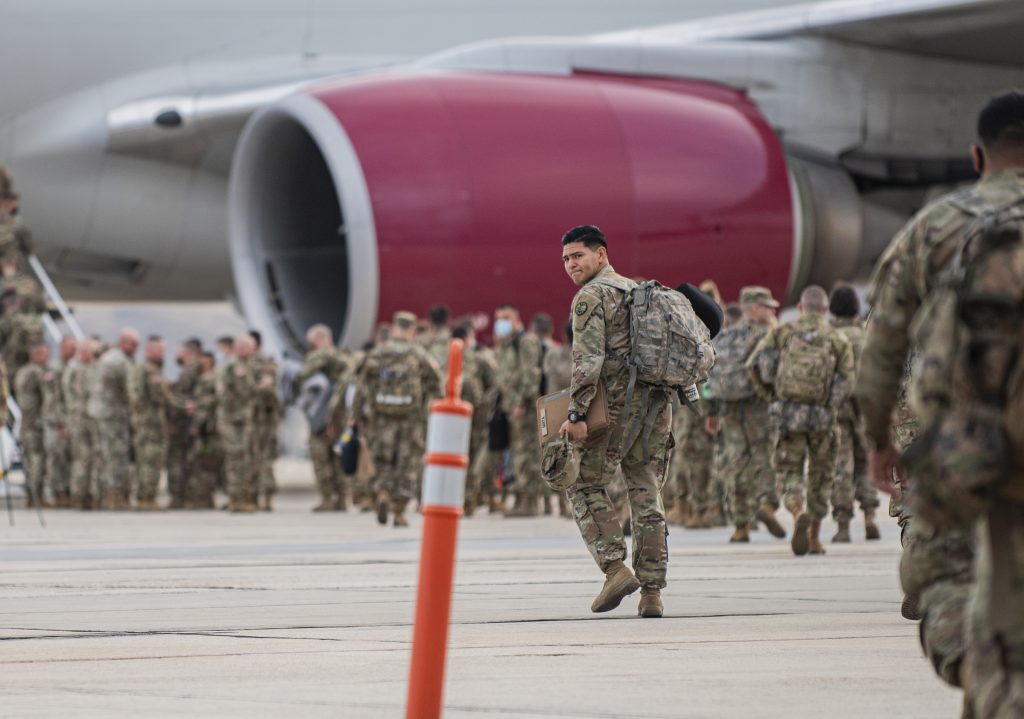
More than 250 Soldiers from the Idaho National Guard’s largest unit, the 116th Cavalry Brigade Combat Team, left for a 12-month deployment on Nov. 5 to Southwest Asia in support of Operation Spartan Shield. The brigade has trained for more than a year in anticipation of this mobilization.
OSS is a joint mission under the United States Central Command and is part of Operation Enduring Freedom. Idaho Soldiers will comprise nearly 20 percent of the 116th CBCT task force during this rotation. Soldiers from 116th CBCT units in Montana, Nevada and Oregon, as well as the Florida Army National Guard, will also fall under the task force.
“The Soldiers of the 116th are trained and ready to go,” said Lt. Col. Eric Orcutt, 116th CBCT commander. “I could not be more proud of these men and women and the efforts they’ve put forth in training and preparing for this mission. They are eager and they are focused and as always, they will achieve the highest level of success.”
OSS is an ongoing operation and supported primarily by Army National Guard units from across the country. This deployment is anticipated to last approximately 12 months and is the first rotation the brigade is scheduled to support, with the second rotation occurring in the summer of 2022. The Soldiers mobilizing today will receive 45 days of additional training stateside before deploying overseas.
The 116th Cavalry Brigade Combat Team previously deployed in support of the Global War on Terror in 2004 and 2010 to Iraq. Additionally, more than 400 Idaho Air National Guardsmen deployed to Southwest Asia in the summer of 2020.
COVID response prompts Idaho National Guard to establish first dual-status commander
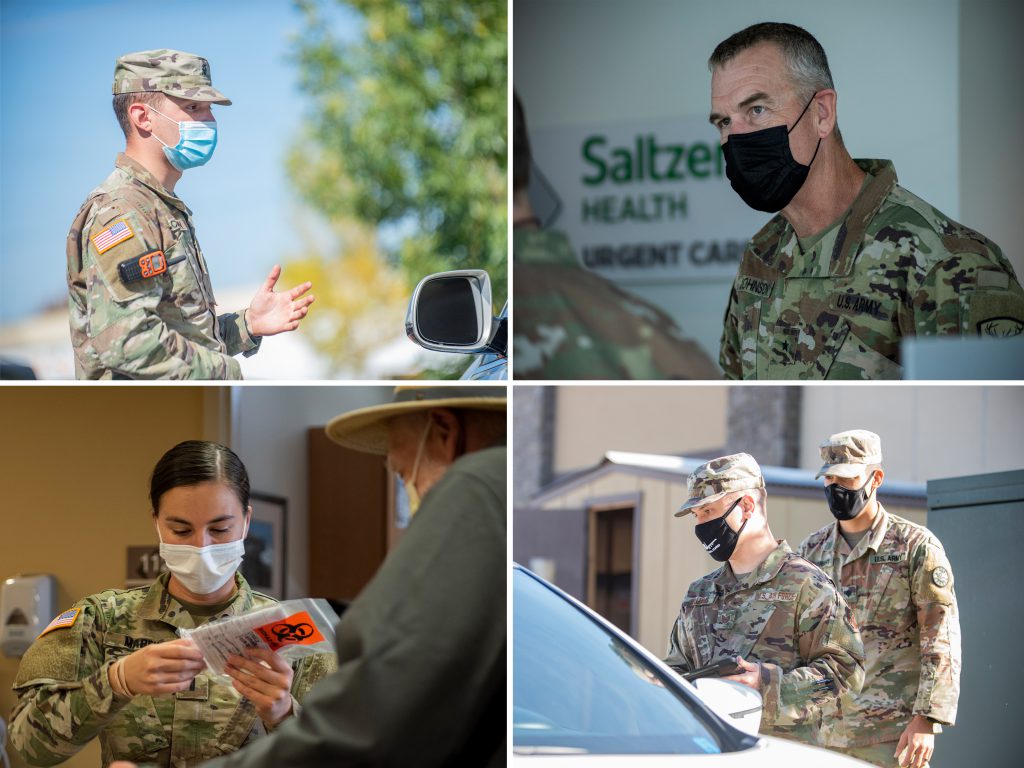
Idaho Military Division Public Affairs/Crystal Farris
In September, after a second wave of COVID-19 cases spread across Idaho, Gov. Brad Little authorized the mobilization of up to 150 Idaho National Guard Soldiers and Airmen. He also requested additional federal support as a last-ditch effort to avoid activating a statewide crisis standards of care—a first in Idaho’s history.
On Sept. 7, at the recommendation of Gov. Little and the Adjutant General of Idaho Maj. Gen. Michael Garshak, U.S. Northern Command appointed Brig. Gen. Russ Johnson, Idaho National Guard director of joint staff, as the state’s first-ever dual-status commander. That same day, Idaho Guardsmen and federal active duty military personnel began reporting to hospitals, clinics and other medical facilities across the state in support of overwhelmed medical staff.
“Joint Task Force – Idaho is helping free up civilian medical staff allowing them to focus on providing medical care during the ongoing surge in COVID-19 cases,” said Johnson. “Collectively, our Title 32 Idaho National Guardsmen and Title 10 active duty personnel are employed in direct support of our healthcare sector, making a difference in the lives of Idaho citizens every day.”
Currently, Idaho National Guardsmen are serving at nearly two-dozen healthcare facilities across the state performing non-clinical duties including medical screenings, testing collection, logistics assistance and other administrative tasks.
Idaho National Guard Col. Britt Vanshur, chief of the joint staff, said the Idaho National Guard provides support in administrative functions rather than playing a clinical role, since the majority of its medical professionals are part-time Guardsmen already working full time at hospitals, clinics and healthcare facilities.
“It would be imprudent to pull our Idaho Guard medical personnel from their civilian capacities at these healthcare facilities just to activate and send them back in uniform to perform these same tasks,” said Vanshur. “They’re already making a positive impact on the health districts in their civilian capacity.”
This activation marks the second time since the beginning of the pandemic that Idaho National Guardsmen have deployed in response to COVID-19. In March 2020, the Idaho National Guard began mobilizing more than 400 citizen-Soldiers and Airmen as part of the organization’s first COVID-19 relief effort, named Task Force Agile Response.
During this second wave, while record numbers of COVID-19 cases overwhelmed northern Idaho, Kootenai Health requested assistance through the Idaho Office of Emergency Management as the hospital’s capability reached its limits, forcing it to implement emergency standards of care.
In response to this request, the Department of Defense, through U.S. Northern Command, allocated a U.S. Army medical response team. The 23-person MRT is augmenting Kootenai Health by providing doctors, nurses and respiratory therapists from various commands and locations, including Fort Carson, Colorado and Joint Base Lewis-McChord, Washington.
This is the first time in Idaho history that Title 32 and Title 10 personnel have mobilized under one joint task force creating the demand for a dual-status commander to effectively coordinate response efforts between both forces.
“Dual-status command effectively streamlines National Guard and active component efforts under a single commander in support of state and federal civil authorities,” said Johnson. “It ensures we all pull in the same direction to meet the needs—current and emerging—of the governor and his emergency management leadership.”
Idaho is one of several states to recently activate a dual-status commander for COVID-19 response. Other states include Alabama, Mississippi, Louisiana and Tennessee.
Members of Joint Task Force – Idaho have collectively worked thousands of hours since September, while providing care to COVID-19 patients and much-needed relief to overworked healthcare facility staffs.
“Idaho’s joint task force has been highly successful on many fronts,” said Johnson. “Our Guardsmen and active duty counterparts have put their personal lives on hold to come together and answer the call of fellow citizens during this historic pandemic.”
Idaho National Guard sends first wildland firefighting crew to northern Idaho
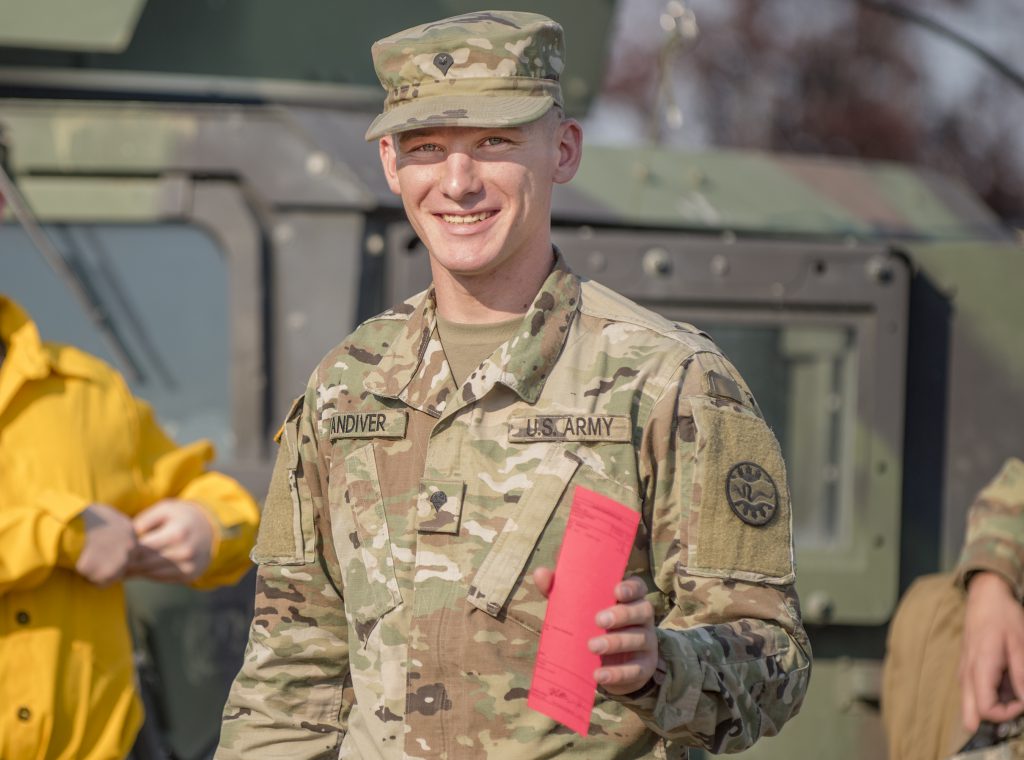
Idaho Military Division Public Affairs/Master Sgt. Becky Vanshur
Idaho National Guard Soldiers and Airmen made organizational history by sending wildland Firefighter Type 2 Red Card certified Guardsmen to northern Idaho to fight fires for the first time. The newly assigned crewmembers of the Task Force Timber Shield left Boise Aug. 4 to assist the Idaho Department of Lands’ mission of containing more than 15 significant wildland fires currently burning in Idaho.
It is the first time the IDL requested Idaho Gov. Brad Little to issue an emergency declaration for making Idaho National Guard resources available to assist fighting against fires on the ground. For some Guardsmen, the volunteer notice came early in July and they immediately began training to earn their FFT2 Incident Qualification Cards, commonly known as a Red Card certification.
“I made sure my name was on that list when I heard the call for volunteers,” said 2nd Lt. Travis Stice. “It will be hard, physical labor, which I am excited for. I told my son that I was going to leave to go fight fires and he said, ‘but you are in the Army, you’re not a firefighter,’ and I said, ‘We do everything, buddy.’”
Stice is one of 72 Guardsmen who has earned his Red Card and more personnel are currently completing the training in anticipation of additional missions. He joined the Idaho National Guard four years ago and this is his first State Active Duty mission as a Guardsman.
“I am very excited that this is a state mission,” Stice said. “It’s the reason I signed up for the Idaho National Guard, to help the citizens of Idaho, along with serving my country. I just love my fellow Idahoans. I called my employer with one day’s notice and they said ‘awesome, just come back safe and we’ll work everything out when you come back.’ They were very supportive even with the short notice.”
The additional training for more Red Card certified Guardsmen stemmed after the governor issued the emergency declaration July 9 to mobilize Idaho National Guard fire line FFT2 qualified personnel to work on active wildfire efforts on the 6.2 million acres of land across mostly northern Idaho where IDL provides fire protection.
The FFT2 crew consists of sixteen fully trained Idaho Guardsmen. The IDL provided one crew boss and two squad bosses to complete a full nineteen-man crew.
“We are currently training more Soldiers and Airmen as they volunteer for this mission in the hopes of building a large capacity consisting of several hand crews,” said Lt. Col. Tony Vincelli, commander of Task Force Timber Shield. “This is the kind of mission that makes serving in the National Guard so unique and rewarding. I hope Soldiers and Airmen see how rewarding this mission is and truly understand the impact they could have.”
The Guardsmen were issued firefighting personal protective equipment, fire-resistant clothing, hand tools and sleeping accommodations just prior to leaving.
“The boots on the ground, physical labor of this kind of work is different than anything I have ever done in my career,” said Maj. Robin Kiska, from the 224th Cyber Operations Squadron, Idaho Air National Guard. “It’s like an extreme hiking adventure in extreme conditions. It will be hard work but a welcomed challenge.”
The governor’s emergency declaration also authorized other personnel to support fire logistic activities and make National Guard aircraft resources available.
Currently, the Idaho National Guard has two UH-60 Black Hawk helicopters and pilots, crew chiefs, refueling crew and essential maintenance personnel assisting with aerial firefighting by delivering water using large capacity “Bambi Buckets,” or helicopter buckets, suspended from helicopter cables. The UH-60 Black Hawk crews have been assisting Idaho’s mission this fire season since July 13 and have dropped more than 187,096 gallons of water on several fires.
Additionally, a request for help at the Idaho Fire Cache warehouse in Coeur d’Alene sent eight Guardsmen on July 21 to provide logistical and operational support of daily refurbishment operation to include palletizing orders, building kits, cleaning, repackaging firefighting hoses and pulling stock of supplies and equipment for state and federal wildland firefighters.
The IDL, the Idaho Office of Emergency Management and the Idaho National Guard developed a partnership a few years ago through a Joint Powers Agreement, defining the process involved in interagency coordination, support, training and planning during times of emergency involving mutual aid of wildland fire relief within Idaho.
“Today marked yet another milestone in the proud history of the Idaho National Guard as wildland firefighter ground crews mobilized and deployed to support the growing wildland fire threats across our state,” said Brig. Gen. Russ Johnson, director of the Idaho National Guard Joint Staff. “Our National Guard service members – and their families – have again answered the call to support the citizens of Idaho during this volatile fire season.”
Currently, around the country more than 770 National Guard Soldiers and Airmen from eight states are assisting with fighting wildland fires. Four UH-60 Black Hawks, two CH-47 Chinooks and one UH-72 Lakota are supporting aviation wildfire operations across the nation. Four C-130 crews are in California, Nevada and Wyoming equipped with Modular Airborne Fire Fighting Systems. To date, National Guard MAFFS crews have made 357 drops and flown 366 sorties in support of the fires across the United States. The National Interagency Fire Center reports over 38,200 fires have burned a total of 3.2 million acres across 14 states.
Idaho Army National Guard participates in new smart weapon training
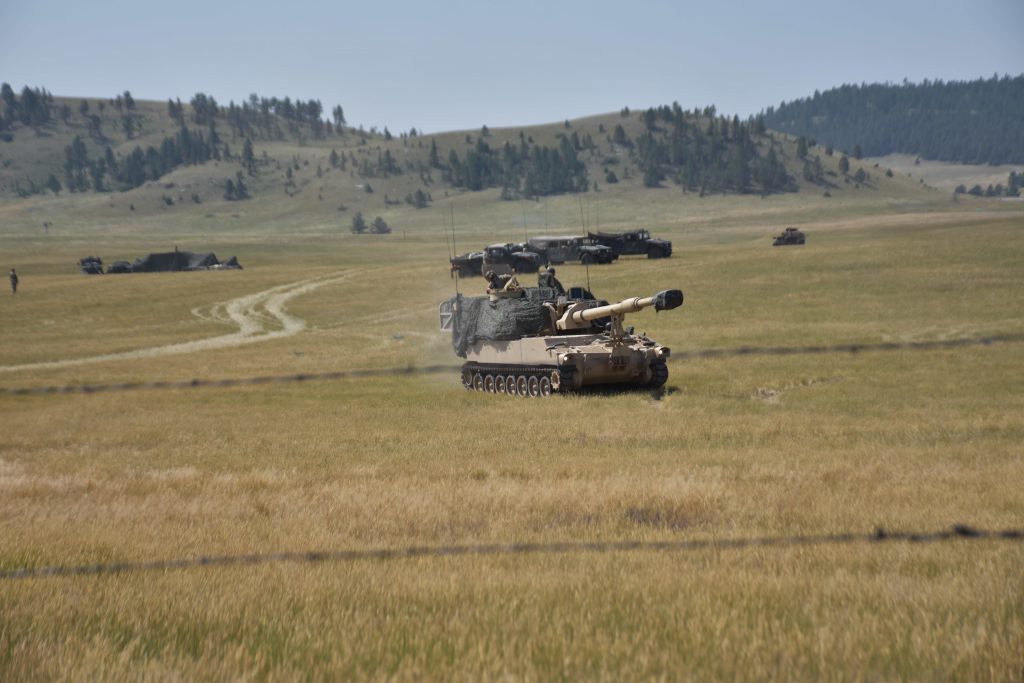
Idaho Military Division Public Affairs/Crystal Farris
The Idaho Army National Guard’s 1st Battalion of the 148th Field Artillery Regiment returned from its annual training July 24, after spending more than two weeks at Camp Guernsey, Wyoming, where it participated in its first M1156 Precision Guidance Kit new equipment training.
“Receiving the PGK NET was a great opportunity that will enhance the battalion and the 116th Cavalry Brigade Combat Team’s lethality on the battlefield,” said Lt. Col. Eric Orcutt, commander of the 1-148th FAR. “We purposely sought to field the PGK prior to the brigade’s upcoming mobilizations. If the PGK capability exists in the theater of operations we end up in, then our Soldiers will be trained to employ it and bring a precision capability to the fight.”
The GPS guidance kit with fuze functions and integrated GPS receiver, provides the 1-148th FAR with the latest technology to perform its warfighting mission and enables the unit to more accurately deploy munitions within 30 meters of an intended target, as opposed to the average 50 meters of traditional artillery.
Small aerodynamic fins on the fuze allow the system to make flight adjustments of the round’s trajectory and steer the shell on target. A fail safe can also prevent the shell from exploding if it falls outside 150 meters of an intended target.
This enables Soldiers to more confidently call in artillery support close to their position, reduce the number of shells needed to destroy a target and reduce difficulties in keeping crews supplied, said Sgt. 1st Class Mike Taylor, master gunner with the 1-148th FAR.
The fuze kit weighs three pounds and threads into the nose of conventional 155mm high explosive artillery shells, providing near-precision capabilities at a cost far less than precision munitions, Taylor added.
During the training, Soldiers belonging to Batteries Alpha, Bravo and Charlie learned about the PGK’s capabilities and conducted live-fire for the first time since the 1-148th FAR completed its National Training Center rotation at Fort Irwin, California, in 2019.
Orcutt said Camp Guernsey provided the battalion the ability to effectively train and conduct live-fire with more than 10 kilometers of open land.
“The 1-148 FAR was excited for the training at Camp Guernsey,” he said. “After last year’s annual training during COVID-19, everyone was eager to get back on the guns, on the hill, behind their fire direction computers, or wherever their job is. The training area was wooded, green, and full of terrain that many have not had an opportunity to experience, keeping the morale high and the training challenging.”
The 1-148th FAR employs fire to destroy, neutralize, suppress or shape enemy forces; provides fire support to maneuver in close combat and during counterattack to control land areas; and provides counterfire.
It is equipped with M1096A6 Paladins, self-propelled howitzers that fire 155mm artillery shells. Crews that operate the Paladin consist of four-man teams; a driver, a number one man, a gunner and a howitzer section chief.
The number one man is responsible for loading and firing the howitzer, the gunner fuzes the round and cuts propellant powder, while the section chief manages all firing data and ensures the howitzer is laid on target.
 Official Government Website
Official Government Website